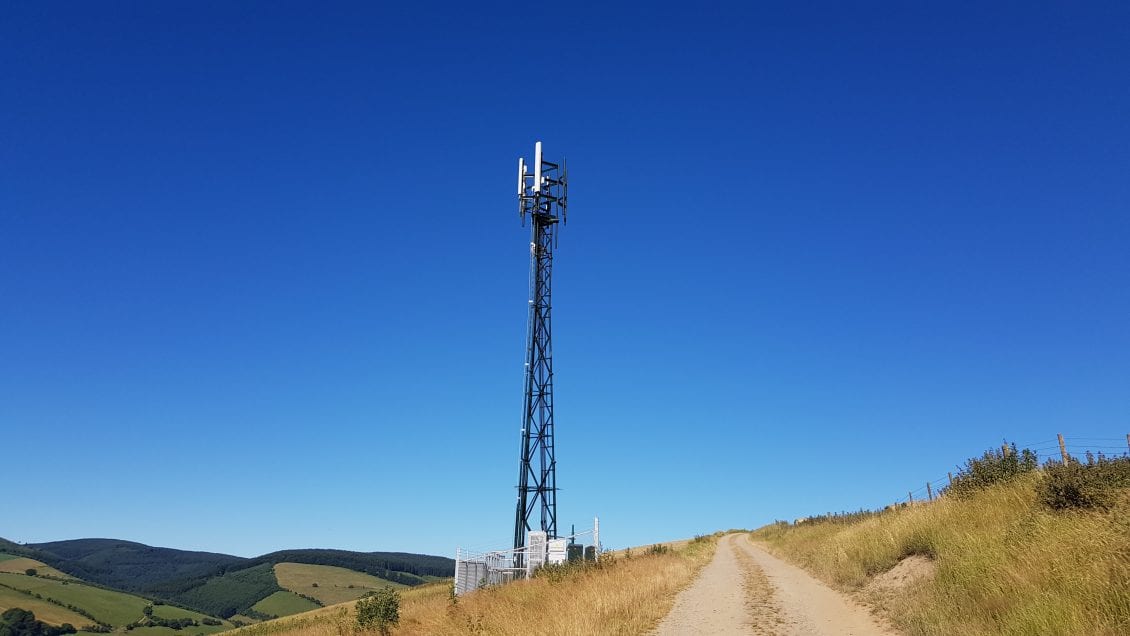4G coverage in rural areas of Wales is now at record levels thanks to a big boost in the number of new masts built in recent years.
EE, the UK’s largest mobile operator and part of BT Group, has revealed today that it hasswitched on nearly 1,000 4G sites across Wales since 2012, bringing coverage to areas which had no mobile coverage before.
In Dwyfor Meirionnydd, for example, 10 new 4G sites have been switched on since 2017. The rural constituency in north Wales – which includes a large part of the Snowdonia National Park – has a further 17 new 4G sites planned, with seven due to be switched on, and four awaiting planning consent.
The area is also due to receive 13 new Extended Area Service (EAS) masts built by the Home Office to provide Emergency Services Network coverage in the most remote and rural parts of the UK. These sites are in addition to those new sites being provided by EE.
As a result of the new mast builds, 81% of rural areas across Wales can now receive a 4G service from EE. Across the whole of Wales, 82% of the landmass can now receive the service, higher than any other mobile network. This figure is set to improve with more mast sites due to be built or switched on in the next 12 months.
In order to bring 4G to more places, EE has switched on its low-frequency 800MHz signal – which improves indoor mobile coverage – in around 360 sites across Wales. This lower frequency signal has filled in large areas that were previously 4G ‘not spots’.
The improved 4G coverage also allows people in areas struggling with slow home broadband speeds – or those not able to get fixed broadband installed – to get home broadband via a 4G home router. EE’s 4G Home Router can give average speeds of more than 30Mbps, which is faster than many standard broadband connections.
Marc Allera, CEO of BT’s consumer division, said: “In the last few years, our investment across Wales has resulted in a huge increase in rural mobile coverage. These new 4G mast sites have brought coverage to parts of the country that were previously unconnected. People living in and visiting rural parts of Wales are now increasingly able to access this essential part of modern life.
“But there are still major challenges to building masts in very rural areas. The UK government’s Shared Rural Network plans should help us reach some of these final not spots. As part of that, we will share the benefits of EE’s investment in Wales with other operators, and ensure that everyone benefits from improved coverage and choice. But it’s important also that planning rules for mast building are improved to make the process less complex and time consuming. This is a real issue in Wales.”
Dafydd Gruffydd, Managing Director of enterprise agency Menter Môn, said: “We welcome the increase in 4G access in rural Wales. For many years we have been extoling the benefits of digital technology to businesses in sectors such as food, tourism and agriculture. However, our efforts were often in vain without sufficient coverage to meet their expectations.
“Access to digital technology is also vital from an innovation perspective and it’s important that rural areas aren’t left behind. Recently we’ve introduced Internet of Things and Wi-Fi analytics to business in Ynys Môn and Gwynedd. We believe that there is significant potential to develop new products and services using this new technology, and good connectivity is obviously a basic requirement.”
EE’s ongoing investment in rural masts will also provide coverage for the new Emergency Services Network – to be delivered by EE – which will connect 300,000 UK emergency services personnel.









Leave a Reply
View Comments